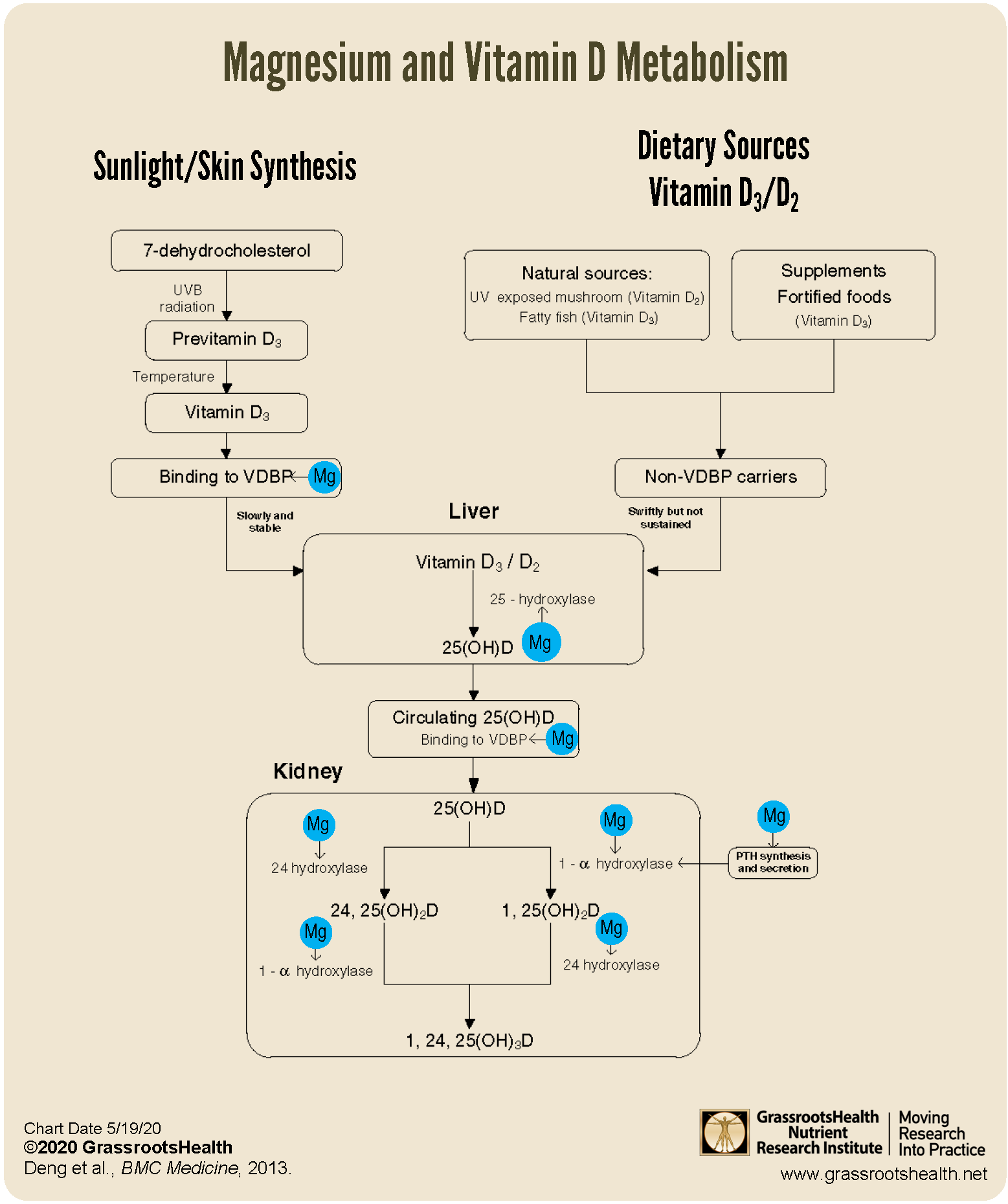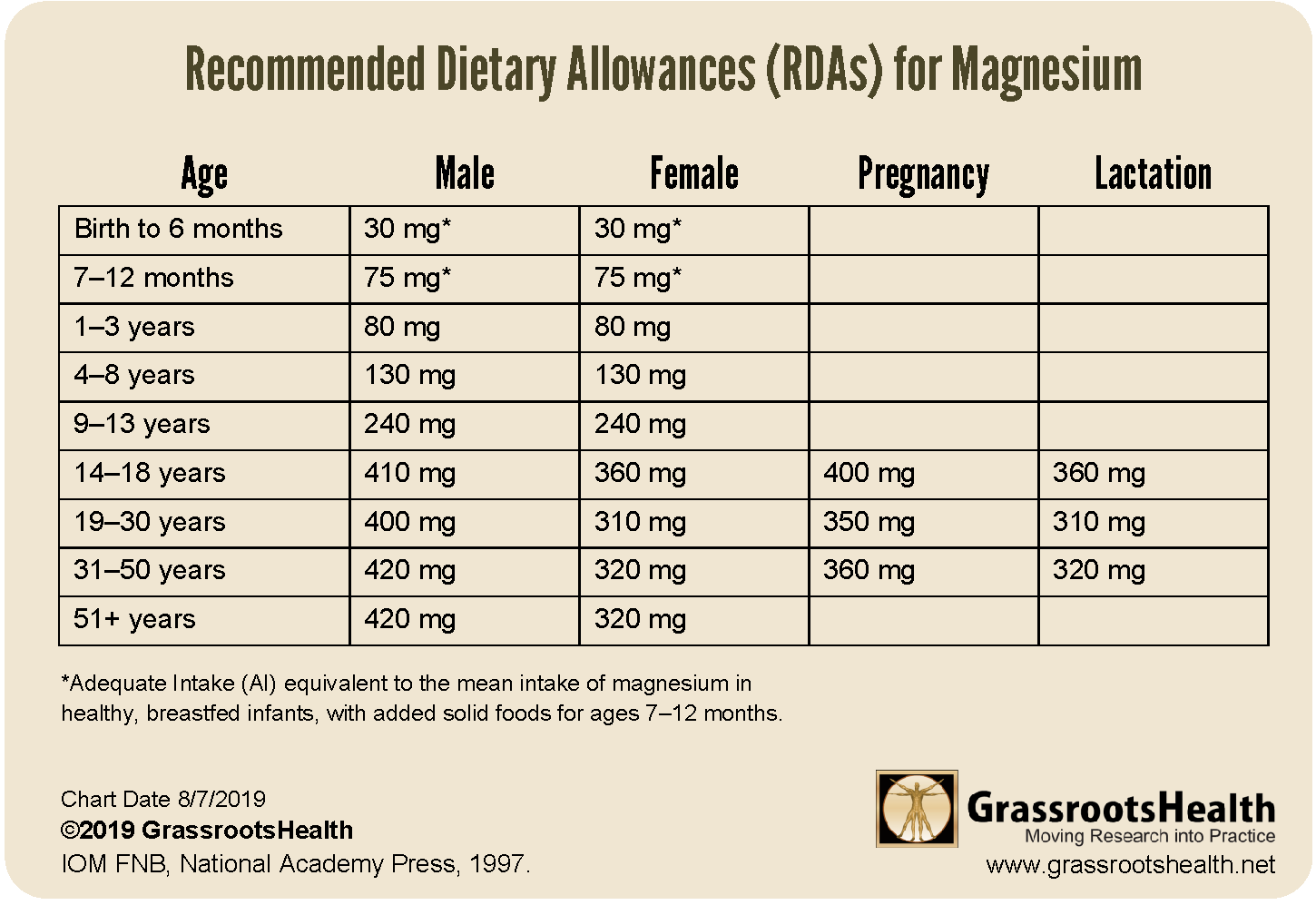Published on June 9, 2020
Our vitamin D myth busting series continues, with our last post dispelling the myth that vitamin D can become toxic when stored in fat and the myth that toxicity is a concern when taking more than the official RDA of 600 IU/day. While it is true that vitamin D has the potential for toxicity, as many things do when taken in extreme amounts, it is very difficult to reach toxic levels of vitamin D in the body.
*Please Note: Individuals with certain conditions, such as primary hyperparathyroidism, sarcoidosis, tuberculosis, and lymphoma, may be hypersensitive to vitamin D supplementation and may need to be more cautious when supplementing, or work with a health care provider. If you feel you have toxic side effects from vitamin D supplementation, please talk to your doctor. These conditions will be discussed in more detail in an upcoming post.
How do nutrients work together?
Co-nutrients are nutrients that work together for some process. If one co-nutrient is limited, either missing or not plentiful enough, then the process might also be limited. For example, your body needs magnesium for vitamin D metabolism, as illustrated in the diagram below by Deng et al.; without sufficient magnesium, the amount of vitamin D that can be metabolized and used by your body is limited and may result in a lack of conversion of vitamin D into its other active forms.
This is also an example of how co-nutrients act as co-enzymes, to assist enzymes in carrying out their function. Magnesium, zinc, copper and selenium are just a few nutrients that act as co-enzymes for hundreds of different processes within the body – many of which also involve vitamin D. If someone is deficient in any one of the vitamins or minerals needed to carry out the numerous enzymatic reactions in a metabolic pathway, it can result in inhibited overall function. For example, one small part of the pathway that makes the neurotransmitter dopamine requires 10 different micronutrients. If any one of those micronutrients is in short supply, the enzyme that relies on it as a cofactor will not be able to function properly and that pathway is limited in its ability to make dopamine. As a result, pathological conditions may arise over time. GrassrootsHealth offers a variety of different tests to determine if certain vitamin and mineral levels are within proper range to carry out their normal functions, such as their role in enzyme functionality.
Can taking vitamin D create a co-nutrient imbalance?
 There is concern that taking “too much” vitamin D, especially when taken without co-nutrients, may create imbalances in the body – and this is a very valid concern! However, the reality is not so much that taking vitamin D causes another nutrient to become deficient, but that other pre-existing nutrient deficiencies may become more apparent when vitamin D is no longer the limiting nutrient in short supply.
There is concern that taking “too much” vitamin D, especially when taken without co-nutrients, may create imbalances in the body – and this is a very valid concern! However, the reality is not so much that taking vitamin D causes another nutrient to become deficient, but that other pre-existing nutrient deficiencies may become more apparent when vitamin D is no longer the limiting nutrient in short supply.
So, what if someone is taking more than 600 IU/day, or even 4,000 IU/day of vitamin D, but is not also getting enough of the necessary co-nutrients, such as magnesium?
Magnesium is a mineral essential for many functions within the body besides vitamin D activation, such as blood pressure regulation, bone health, and blood glucose control. Unfortunately, magnesium deficiency is common world-wide, and more than half of the US population does not get the recommended daily intake of magnesium. Therefore, it could be safe to assume that most people are starting out with both a vitamin D deficiency and a magnesium deficiency.
When taking vitamin D in amounts to correct a vitamin D deficiency and bring it up to levels most likely seen in our ancestors, such as those in the hunter-gatherer tribes of Africa, you may find your vitamin D level doesn’t increase as expected if a magnesium deficiency is also present. It is possible that the increased vitamin D intake may result in unmasking existing deficiencies of other nutrients, such as magnesium. Since more magnesium will likely be used in the conversion of an increased intake of vitamin D, any signs associated with magnesium deficiency are likely to surface in those individuals who started with a magnesium deficiency. In this case, it is extremely important to assess dietary magnesium intake and make adjustments or add a magnesium supplement, as well as to measure and track magnesium levels along with vitamin D levels.
Other important nutrients to consider taking with vitamin D include vitamin K, B vitamins, zinc, boron, and probiotics – most of which can be found in a healthy, well-rounded diet.
Co-nutrients may affect your vitamin D level
As demonstrated in the above examples and diagram, the intake of other nutrients has been shown to impact vitamin D levels. In cases where vitamin D levels fail to rise in response to increased intake, increasing magnesium intake may result in an increased response to vitamin D supplementation, and therefore, a higher vitamin D level.
On the other hand, a high intake of certain vitamins that compete with vitamin D, such as vitamin A in the form of retinol or retinyl palmitate (not beta-carotene), can cause a reduction in vitamin D levels. This form of vitamin A is found in food from animal sources (especially liver) and some supplements.
In an upcoming post, we will discuss why keeping this balanced relationship between co-nutrients in mind is extremely important in nutrient research – and how ignoring it may lead to incorrect interpretations of results.
Is it True?
Our goal with this “Vitamin D Myths” series is to provide information and resources to answer the question, “Why should I care about vitamin D?” and to help dispel the myths and misconceptions surrounding it that may be preventing you and others from accepting it as an essential component to health. We will also discuss other nutrients essential to the function of vitamin D (and vice versa) within the body that should not be ignored.
Vitamin D is necessary for multiple functions within the body and should not be ignored, but has the hype about vitamin D and its role in the body’s response to COVID-19 been over-exaggerated? What concerns about vitamin D are valid, and which are not? We want to provide you with evidence-based information to help you decide what vitamin D action to take, if any, for your own health.
We want to hear from you!
Is there a particular ‘myth’ you have heard about vitamin D? Or, something you have read or been told that makes you question whether vitamin D ‘deserves’ so much attention? Or whether you should be taking it and how much? Share with us by emailing jen @grassrootshealth.org what you have heard that makes you question vitamin D so that we can consider addressing it in our newsletters.
Do you know your nutrient status?
Do you need to be concerned about getting more vitamin D or other essential nutrients, such as magnesium, omega-3s and zinc? Test today and take the necessary steps to ensure your body has enough of each to support daily health!
Do You Have Enough Vitamin D to Support a Healthy Immune System?
We’re in a time of great crisis that could be greatly affected by making sure you and everyone you know has a serum level of at least 40 ng/ml. Help us help you.
Do you know what your vitamin D level is? Be sure to test today to find out, and take steps to keep it within a target of 40-60 ng/ml or 100-150 nmol/L! Give your immune system the nutrients it needs to support a healthy you and protect yourself from unnecessary diseases.
GrassrootsHealth Nutrient Research Institute is preparing to do a Community RCT with the use of our myData-myAnswers nutrient health system that over 15,000 people are already using for their health. We will demonstrate how one can use the Nutrient Research Model established by Dr. Robert Heaney to establish the effect of vitamin D serum levels of at least 40 ng/ml (100 nmol/L) on risk reduction with different ethnicities in the population. Please let us know if you’re interested in helping sponsor this project.
Through GrassrootsHealth Nutrient Research Institute, you can also test your essential elements magnesium, copper, zinc and selenium, toxins such as lead, mercury and cadmium, as well as your omega-3 levels, inflammation levels and thyroid stimulating hormone (TSH) level. Find out your levels today! Log on to the test selection page (click the link below) to get your tests and see for yourself if your levels can be improved.
Make sure you track your results before and after, about every 6 months!
Click Here to Access the Test Page
How can I track my nutrient intake and levels over time?
To help you track your supplement use and nutrient levels, GrassrootsHealth has created the Personal Health Nutrient Decision System called
For each specific supplement, you can track what days you take it, how much, and many other details. This will help you know your true supplemental intake and what patterns of use work for you to reach and maintain optimum nutrient levels. Check it out today!










